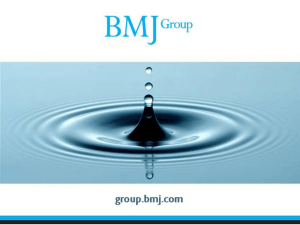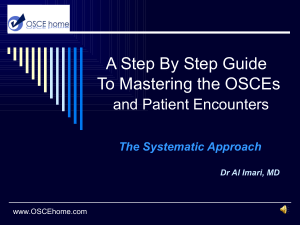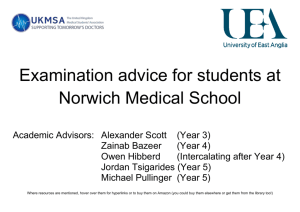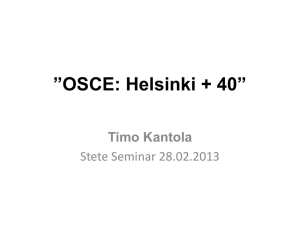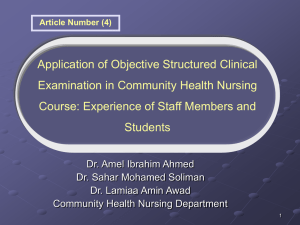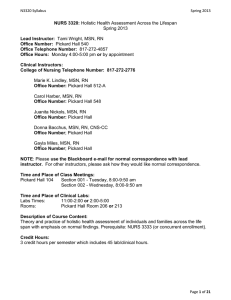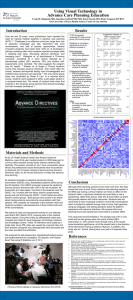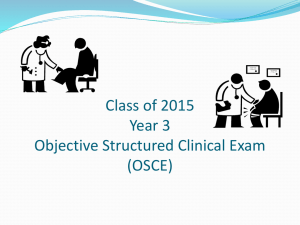David Gallimore
advertisement
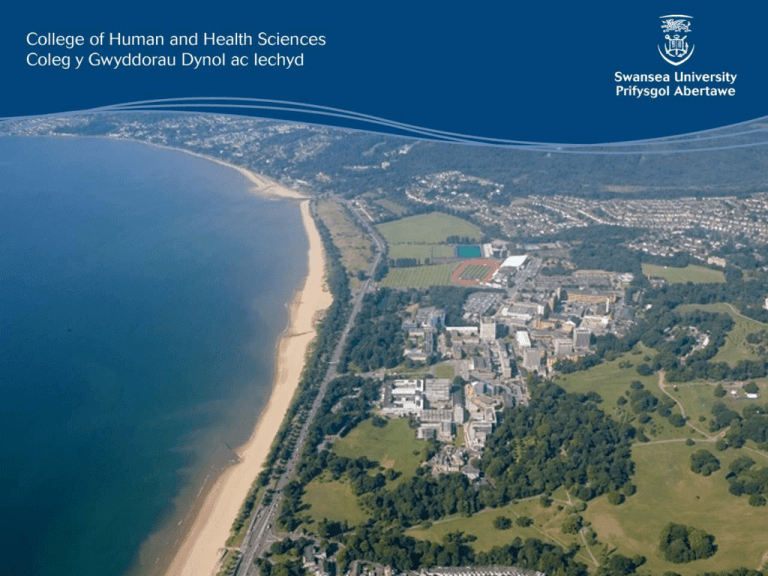
Introduction to the Fundamentals of Nursing Practice – Assessment through OSCE David Gallimore Senior Lecturer, CHHS Outline of presentation Why? What did we do? How did we do? Pre Registration BSc Nursing • Approximately 800 students in total • 3 year course – 2 intakes/year, campus in Carmarthen • 50% theory, 50% practice • Bachelor of Science degree and NMC registration • These students are 8 weeks into course, haven’t been on clinical placement Patient Safety In one year there are 3,283 hospital in-patient deaths through preventable error, another 7,000 suffer severe harm Equivalent to 9 medium size aircraft (Boeing 737/Airbus A320) being written off with total loss of life every year…… …..in the UK! (1000 Lives plus) NATIONAL CONFIDENTIAL ENQUIRY into PATIENT OUTCOME and DEATH (NCEPOD) report 2005 • Inconsistent recognition of physiological instability • Respiratory rate was infrequently recorded. • Inconsistent action NATIONAL CONFIDENTIAL ENQUIRY into PATIENT OUTCOME and DEATH (NCEPOD) report 2012 “Time to Intervene” Advisors considered that warning signs for cardiac arrest were present in 344 out of 462 (75%) of cases. These warning signs were recognised poorly, acted on infrequently, and escalated to more senior doctors infrequently. Chain of prevention • Smith, G.B. (2010) In-hospital cardiac arrest: Is it time for an in-hospital ‘chain of prevention’? Resuscitation, Volume 81, Issue 9, 2010, 1209 - 1211 Nurse Education • The Essential Skills Clusters (NMC 2007,2010) clearly state that students should be able to recognise and respond appropriately to a deteriorating patient and/or emergency situation. Recognising Sick Patient Teaching Day Blackboard Learning Module Usage • 95% of students have used the learning module since it has been introduced. • Average number of times accessed per student = 28 • Overall number of times accessed by all cohorts = 14656 Evaluation • Poor student engagement in practical skills • Students lacking in confidence • Feedback from clinical staff • Are our students able to competently assess basic physiological changes in patients? What is an OSCE? OSCEs • Developed in the UK in the 1970’s • Specifically designed to assess clinical skills in medical students • Currently OSCEs are increasingly being considered for assessing clinical competence in nursing, midwifery and allied health curricula • Numerous studies have identified the validity and reliability of OSCEs as an assessment strategy • Accepted assessment strategy worldwide Recognising Sick Patient Formative OSCEs • All student must be aware of the importance of passing OSCEs before going out into practice • Test doing the following activities: – Station 1: Hand-washing – Station 2:Respirations,Pulse,Temperature – Station 3:Blood Pressure • Pass mark for Hand-washing is 100% • Pass mark for the other two stations are 75% On day of OSCE • • • • Students allocated into groups Student takes turns as “patient” Wait in reception area (PC lab) On Blackboard there are a number of resources: – Student handbook for OSCEs – Information on the process for the OSCE – Marking criteria for the OSCEs Handwashing Pulse/Respirations and Temperature Blood Pressure Assessment Results of Formative OSCEs • 94% passed hand-washing on first attempt – all retrieved at second attempt. • 87% passed Respirations, Pulse & Temperature on first attempt – all retrieved at second attempt. • 95% passed blood pressure on first attempt – all retrieved at second attempt. Student evaluations • The OSCE and clinical skills week enabled me to learn relevant skills – Strongly agree; 67% (n=51) Agree; 33% (n=25) •The clinical skills week increased my confidence with my clinical skills •Strongly agree; 71% (n=58) Agree; 29% (n=24) •I had enough time to practice before the OSCE Agree; 2% (n=2) disagree; 61% (n=50) strongly disagree; 37% (n=30) Student Evaluation “A very enjoyable way of learning” “The most stressful thing I’ve ever done – but worthwhile” “The blackboard learning module on recognising the sick patient was helpful” “I enjoyed the OSCEs week it taught me a lot.” “ It was good to know how to do observations properly especially as we are on placement very soon.” “I found it a worthwhile and helpful week to prepare me for clinical practice.” Summary • Recording changes in patient observations is an important element of patient safety. • This is a skill that should be taught to student nurses before they enter clinical practice • We are now confident that all our students are able to accurately and confidently perform these skills References Clarke, J. (2008). The ‘How to Guide’ for reducing harm from deterioration. London: Patient Safety First. Smith, G.B. (2010). In-hospital cardiac arrest: Is it time for an in-hospital ‘chain of prevention’? Resuscitation, 81,1209-1211.
